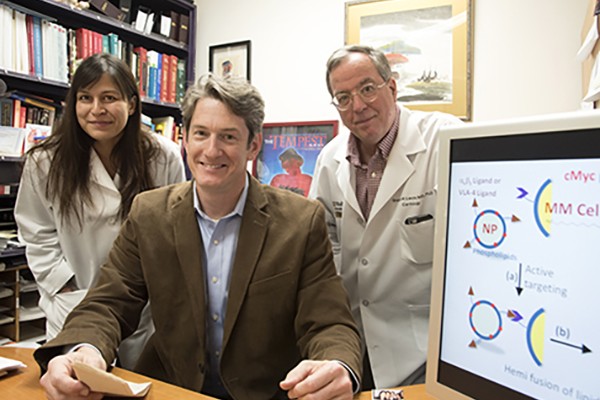New chief of spine surgery named
Munish C. Gupta, MD, has been appointed professor and chief of spine surgery in the Department of Orthopaedic Surgery at Washington University School of Medicine in St. Louis. He comes from the University of California, Davis and will assume his new duties Sept. 1.
Shearrer named associate vice chancellor for medical alumni and development programs
David Shearrer, a leader in fundraising initiatives at Washington University School of Medicine in St. Louis, has been named the university’s associate vice chancellor and director of medical alumni and development programs.
Scientist receives sleep, aging research grant
Akiko Satoh, PhD, staff scientist in the Department of Developmental Biology at Washington University School of Medicine in St. Louis, hasreceived a one-year, $20,000 grant from the American Sleep Medicine Foundation for research titled “Hypothalamic Control of Sleep Quality and its Impact on Aging.”
Applications sought for cancer research grants
Washington University’s American Cancer Society Institutional Research Grant (ACS-IRG) is now accepting applications from junior faculty for pilot project awards through 4 p.m. July 31. A brief email stating an applicant’s intent to apply is due July 15.
Mail operations share space in new building
Some of the Danforth Campus, School of Medicine and BJC HealthCare mail operations will share space beginning June 15 to reduce costs and improve efficiency.
Researcher Liu receives grant for work on Crohn’s
Ta-Chiang Liu, MD, PhD, assistant professor of pathology and immunology at Washington University School of Medicine in St. Louis, has received a three-year, $486,000 grant from The Doris Duke Charitable Foundation for research titled “Small Intestinal Paneth Cell Phenotype In Crohn’s Disease: Clinical Relevance And Genetic Associations.”
Duncan entrance to SLCH staff garage reopens, Newstead entrance closes June 1; lane restrictions on Duncan begin June 4
The Duncan Avenue entrance to the St. Louis Children’s Hospital (SLCH) staff parking garage will reopen June 1, a few days later than had been planned due to weather and other delays regarding a Metropolitan Sewer District storm-sewer line upgrade.
Nanotherapy effective in mice with multiple myeloma
Researchers have designed a nanoparticle-based therapy that is effective in treating mice with multiple myeloma, a cancer of bone marrow immune cells. Targeted specifically to the malignant cells, these nanoparticles protect their therapeutic cargo from degradation in the bloodstream and greatly enhance drug delivery into the cancer cells.
Mutch elected chair of Foundation for Women’s Cancer board of directors
David G. Mutch, MD, the Ira C. and Judith Gall Professor of Obstetrics and Gynecology at Washington University School of Medicine, has been elected chairman of the Foundation for Women’s Cancer board of directors.
Antiviral compound may protect brain from pathogens, West Nile virus study shows
Studying West Nile virus infection in mice, scientists at Washington University School of Medicine in St. Louis have shown that an antiviral compound tightens the blood-brain barrier, making it harder for the virus to invade the brain.
View More Stories

